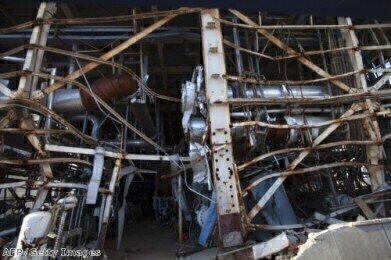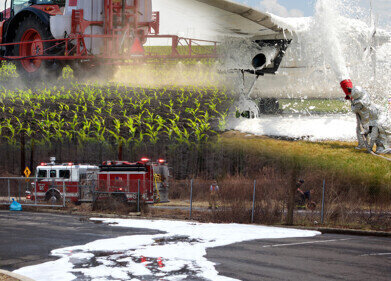Groundwater monitoring
Radioactive groundwater found in Japan
Apr 29 2013
The groundwater in the sunken reservoirs at Fukushima's No. 1 nuclear power plant is proving to be radioactive. Tests completed on groundwater extracted from monitoring holes around the sunken reservoirs have shown that the water has become contaminated and is now radioactive. The testing was done by Tokyo Electric Power Company.
13 samples were taken from the 22 observation holes that surround the reservoirs and were found to contain strontium, amongst other radioactive elements. The reservoirs were built to store water that is tainted during the process of cooling the reactors. The radioactive material found in the samples is minimal and within the normal fluctuations' range. However as several of the reservoirs are leaking, it is not known whether the leaks are in any way related to the radioactive material found in the water.
Tokyo Electric Power Company found 0.03 to 0.048 becquerels per millilitre of radioactive materials were found in the groundwater samples. This was confirmed by tests performed on groundwater samples taken from another two observation holes, in order to confirm the readings.
Studies have begun - by a government panel - in order to find effective ways to prevent the accumulation of any more radioactive water at the Fukushima No. 1 power plant. Plans include the building of a wall around all of the damaged reactor buildings in an attempt to stop groundwater entering them and becoming contaminated.
Approximately 400 tonnes of groundwater seeps into the damaged reactor buildings daily. This water then ends up entering the complicated cooling loop that was installed in order to control the damaged reactors. This means that the groundwater becomes tainted with radioactive material.
The buildup of water - that has become contaminated - is being dealt with on some scale with the use of storage tanks. Tokyo Electric Power Company has also built wells in an attempt to intercept the groundwater as it moves from the mountains to the sea, allowing it to then be pumped away from the nuclear plant before becoming contaminated. However space and storage capacity is quickly running out, meaning that a more fundamental solution needs to be found.
Digital Edition
IET 35.2 March
April 2025
Air Monitoring - Probe Sampling in Hazardous Areas Under Extreme Conditions - New, Game-Changing Sensor for Methane Emissions - Blue Sky Thinking: a 50-year Retrospective on Technological Prog...
View all digital editions
Events
May 10 2025 Karachi, Pakistan
May 11 2025 Vienna, Austria
May 11 2025 Seoul, South Korea
Salon Analyse Industrielle & Instrumentation
May 14 2025 Paris, France
May 15 2025 Istanbul, Turkey



















